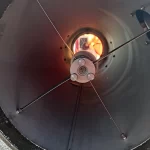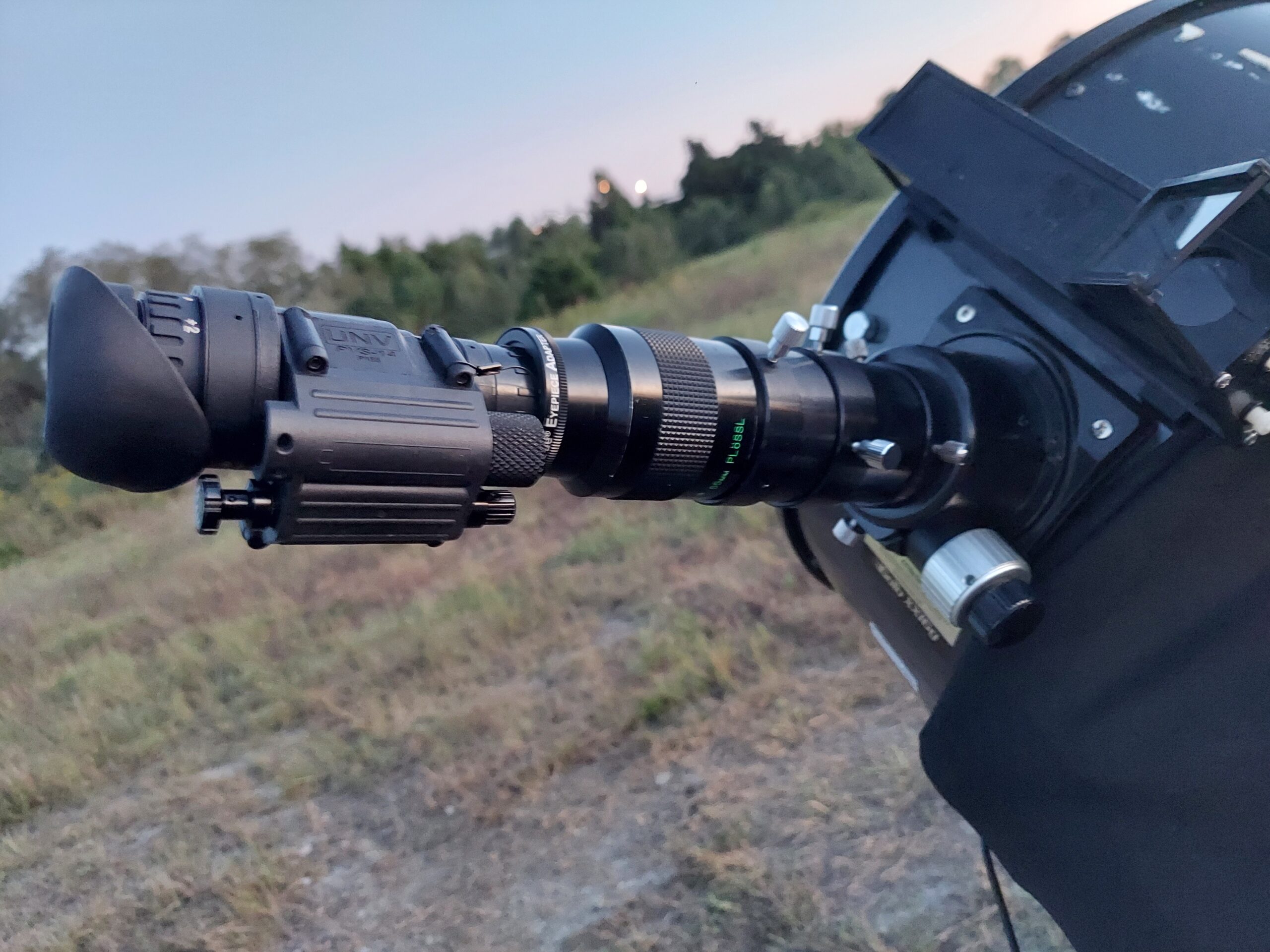Eyepieces are fun to buy. When you start looking at telescopes and eyepieces it can be really tempting to buy all of them. This will only slow down your learning.
You can enjoy astronomy with a single eyepiece. 3 or 4 will likely meet 90% of your needs. Large eyepiece collections can be a distraction from learning the skills of observing. The Baader Zoom is a popular eyepiece for minimalists, adding a barlow will increase the usefulness of this and any eyepiece.
The Baader Zoom often comes with a barlow. A barlow is a lens that effectively doubles your eyepiece collection, but does not take up much space. It increases the focal length of any eyepiece.
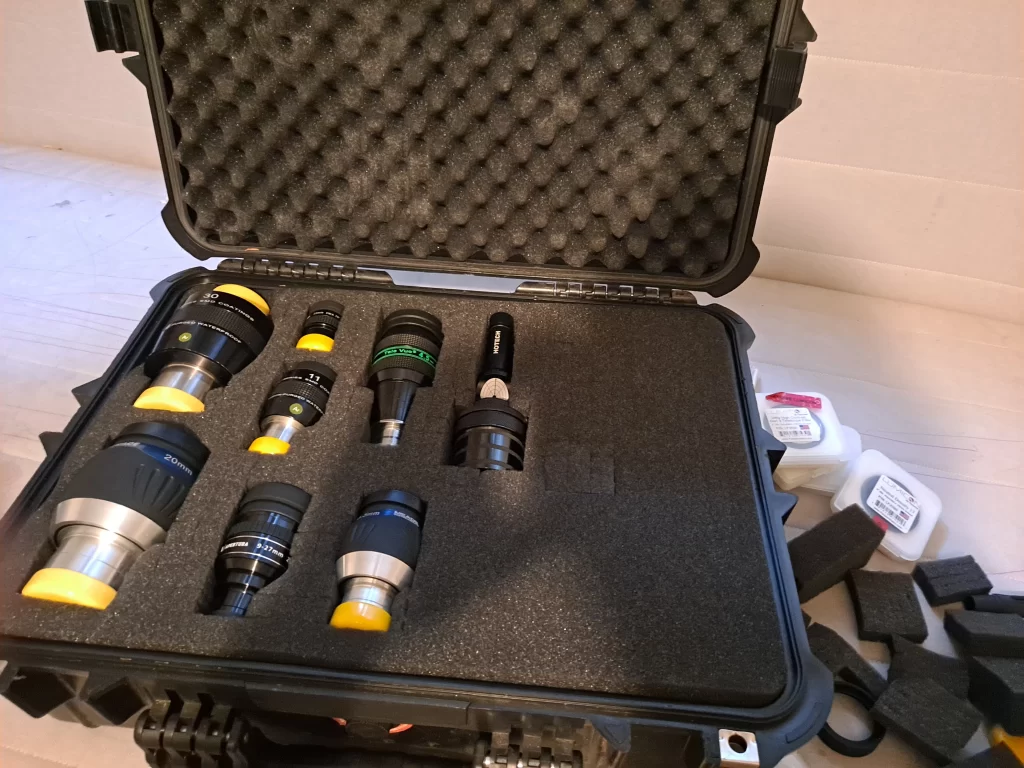
Building Your Eyepiece Collection
When you are talking about visual astronomy, there are a few eyepieces I think everyone should have in their collection.
Really, you need a high power, a medium and a low power then you need a barlow so you can catch as much in between as you can, this ultimately doubles your eyepiece collection.
28mm, 17mm, 10mm and a 6mm
and a barlow
The barlow makes your eyepieces have two options for focal length. A barlow goes into your focuser and then you plug your eyepiece into the barlow.
Be sure that when you are selecting your eyepieces you get all 2 inch or all 1.25. This is the diameter of the eyepieces as they attach to the telescope. Choose the size that matches your telescope to eliminate the need to use an adapter.
Having all one size eyepieces means you can have only one barlow to use with them all.
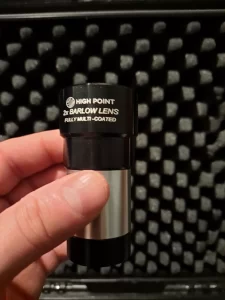
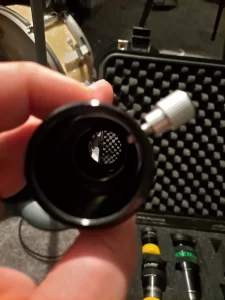
Go more than 2 mm apart in focal length, any less and the difference will be almost imperceivably. For example, instead of getting a 10mm and an 11mm,. Get a 10mm and a 14mm.
Expanding Your Collection
Once you have a few eyepieces that you like, you may consider expanding your collection for special situations if your budget allows.
You need one for aligning your scope, an eyepiece with a wide field of view to help you easily find an object. Maybe a 2inch eyepiece with an 82 degree or 100 degree apparent field of view (AFOV). This will be super helpful for two star alignment as well.
One very high power for exceptionally clear nights which are rare, but you want to be prepared if the seeing conditions are exceptionally stable.
One for outreach with zoom, I have the GSO Apetura Zoom 9-27mm that I love to use when I am sharing the hobby.
One for planetary or lunar, I have a 4.5 Delos that I only rarely use.
One thing I did not know when I was getting into it was that there are different types of barlows. I got a 1.25 inch barlow, so I couldn’t barlow any of my 2 inch eyepieces. So I just kept buying more eyepieces.
My collection grew beyond regular usefulness. I have the space and time to manage the collection that I own and I am happy with it.
It is just too fun to buy new gear.
These are the eyepieces I keep in my case, there are 7 eyepieces and a barlow that I bring with me every night to observe.
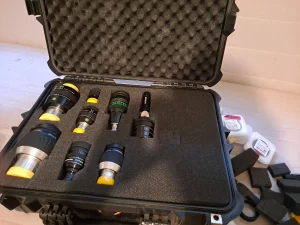
Most nights I use all of them. I tend to only use the barlow when I am really battling with dew because it is fresh glass in the optical train. I try to switch as often as possible with dew.
When you get to really high power they may be closer together so that you can really dial it in. Planetary detail changes if the atmosphere is stable enough you want to get to the highest useful magnification.
How many eyepieces do you regularly use?
This is where I turned to my community. I asked how many eyepieces they own and how many they use.
Of the people surveyed they owned between 2 and 50 eyepieces, and they used between 2 and 7 in a single observing session.
There are a lot of reasons for this large range of answers. The types of eyepieces you use will depend heavily on what you are observing and what the observing conditions are on that night.
I tend to switch out eyepieces frequently when I am battling dew just to get some fresh glass in the optical train.
On nights that are exceptionally clear I find that I am always switching eyepieces to find the exact sweet spot.
As a general rule, you will use 2 or more eyepieces on any given night. The number depends on the seeing conditions and what you are hoping to observe. If the seeing is excellent you may use more eyepieces so you can get maximum useful magnification while observing. If the conditions are poor you may use more eyepieces to observe more objects with less detail.
I also tend to do frequent outreach. I like to use eyepieces with a wide field of view on those nights so I can show people lots of things. I am thinking of changing that strategy to using only a few to keep it simple and waste less time messing with the equipment.
Most people will tell you a simple set up that you use is better than a large collection that you do not.
If you find that you have a lot of eyepieces that you are not using regularly, consider selling them on a used equipment site like AstroMart or in an astronomy group.
Which eyepieces do I need?
In my opinion there is a simple setup for most beginners.
You need a low power, a medium power and a high power.
I would say a 32mm, 22mm, 17mm, 10mm and maybe a 6mm and a barlow.
You need to divide them all by two and make sure you are not overlapping.
Can I buy used eyepieces?
Used eyepieces are a great way to build your collection. I have bought used eyepieces and open box eyepieces as well. My experience was good.
Be sure you are familiar with the basics of buying a used telescope, you can read out handy guide here.
Used eyepieces are sold on special forums like Telescope Equipment Trader on Facebook, Astro Mart, and Cloudy Nights Classified.
Buying from fellow astronomers instead of Junk Man Joe means you know what you are getting because they know what they are selling.
When buying a used eyepiece be sure to ask for pictures and conditions.
Ask what telescope they are using the eyepiece with. If you are new to the hobby this can help you determine if the eyepiece will work well with your scope.
I bought a Baader Hyperion 13mm which is horrible in my F/4.5 scope. The coma makes it almost unusable without a coma corrector. These eyepieces are better for slower scopes. I just did not fully understand what I was getting.
If you are particular about this you may ask them how they clean their eyepieces. You may also want to check out what else they have sold and where they got the eyepiece.
Eyepieces are built pretty sturdy and unless it has been severely abused, it is unlikely you will buy an unusable eyepiece even in used condition.
Eyepieces have coatings on them, this is the most common area of damage. Be sure to get clear photos of the glass.
I bought a used one that said it had been professionally cleaned, but there are black specs there when I look at Jupiter or the Moon.
This might be from a lens pen, I have experienced this. I show mine in this video.
When should I stop buying eyepieces?
When your wife tells you to stop.
Just kidding, we love astronomy as a family.
Start selling eyepieces to buy more eyepieces, it is the cycle of this hobby!
Stop buying eyepieces when you have more than you use in a few nights of observing. I have the excuse of this blog and my YouTube channel to keep buyin new equipment.
I think we gotta Marie Kondo this and if it is more than you can manage well, pare down.

